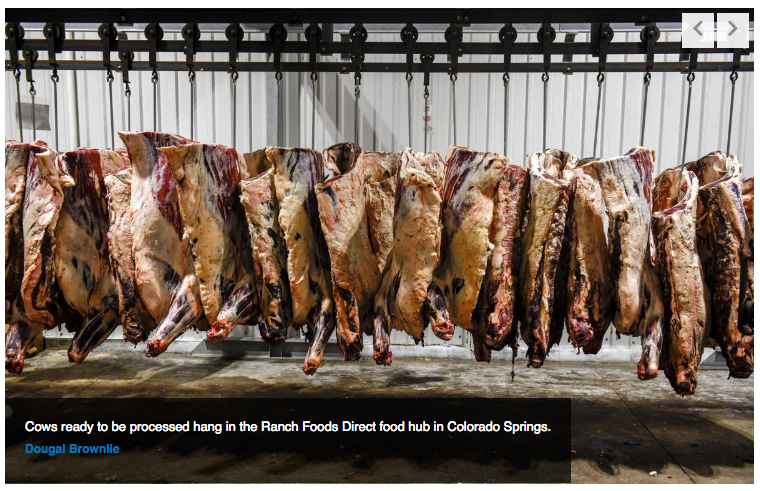The Gazette: Where’s the beef? How Coloradans are getting hooked on local meat
by Haley Witt | Aug 15, 2018
If you’re an omnivore, you might be among the many consumers increasingly concerned about their meat, Colorado beef retailers say.
Many consumers are turning their trust over to local suppliers, said Brad Buchanan, owner of the Flying B Bar Ranch, which produces grass-fed beef in Strasburg.
“We’ve seen a real increase the last few years in terms of the information that families want about the food they put on their table,” Buchanan said. “Our business has been increasing year over year for the last 12 years.”
Flying B Bar Ranch serves 500 to 600 direct customers a year and sells to restaurants and stores in Denver. He said customers are attracted to the meat freshness, no added hormones or antibiotics, supporting local business, making a smaller environmental footprint and ensured animal welfare.
Dave Anderson, general manager at Ranch Foods Direct, said he was hooked on local meat as a customer before he joined the business.
“The most important thing, from my point of view, is that if you buy something from someone who produces something in southeastern Colorado, the money stays here,” Anderson said.
Ranch Foods Direct raises and slaughters cattle 200 miles from Colorado Springs in St. Francis, Kan., and imports the meat directly to its store on Fillmore Street in Colorado Springs. It also supplies to local restaurants such as Cafe Red Point and Drifter’s Hamburgers.
Ranch Foods Direct also boasts no antibiotics, no hormones and humane handling of cattle for its grain-finished beef.
The most significant difference between Anderson and Buchanan’s products is what the cattle are fed.
All cattle start life feeding on grass, but some ranchers switch to feeding them grain toward the end of their lives. Buchanan’s cattle continue to be fed grass — a difference he says has consumer health benefits.
“There are significant health benefits,” Buchanan said. “Significantly higher omega-3 and omega-6 in the beef, higher vitamin levels and actually cancer-fighting agents in the beef.”
Buchanan warned that some grass-fed beef sold in grocery stores is imported from Argentina and Australia, and local grass-fed beef is best.
Anderson’s [Callicrate Cattle Co.] cows are grain-finished. They feed primarily on non-GMO barley, with regular harvests that keep his customers supplied.
“If you’ve ever seen a grass-fed steer, it doesn’t have any marbling or intermuscular fat because it doesn’t get very much nutrition,” Anderson said. “Right now, I can tell you, because of the lack of rain, the grass-feeding cattle ranchers will be doing a lot of slaughtering very soon because they’re running out of grass. There isn’t any grass anywhere these days.”
The prices depend on where you shop.
If you buy beef from Flying B Bar Ranch, some cuts are cheaper than they would be at King Soopers or Safeway, but you have to order in bulk, Buchanan said.
“They’re buying half a beef at a time, and for some folks, it’s harder to do that,” he said.
If you don’t have the freezer space for half a cow, you might find better luck at a store such as Ranch Foods Direct, where you can buy in smaller quantities at prices competitive with specialty retailers such as Whole Foods.
